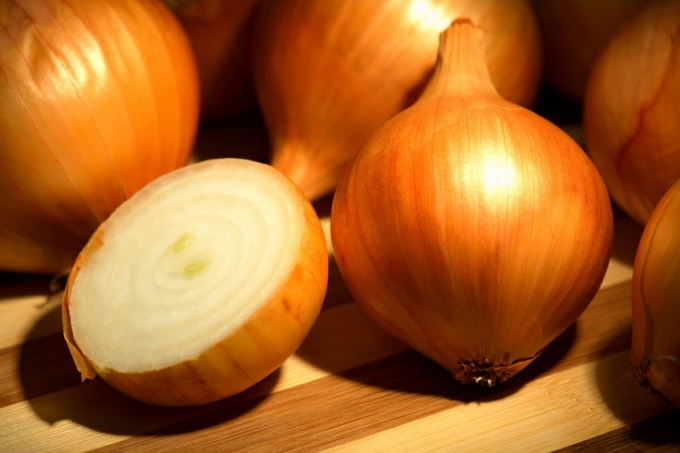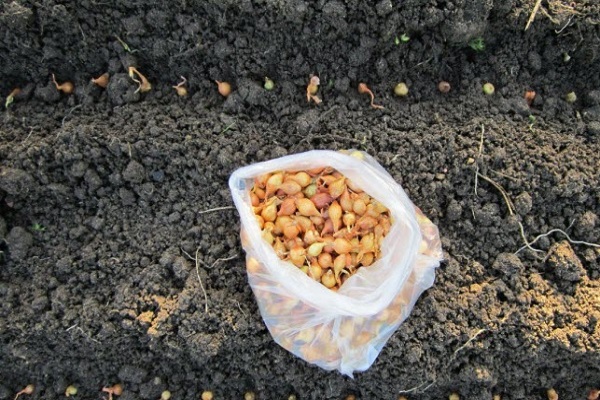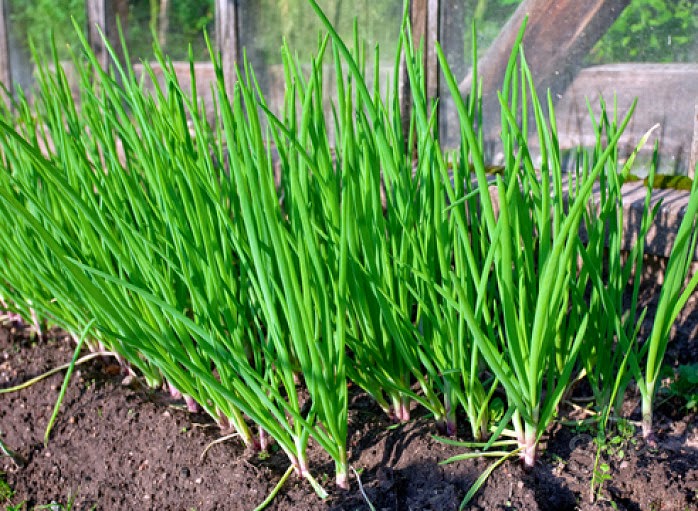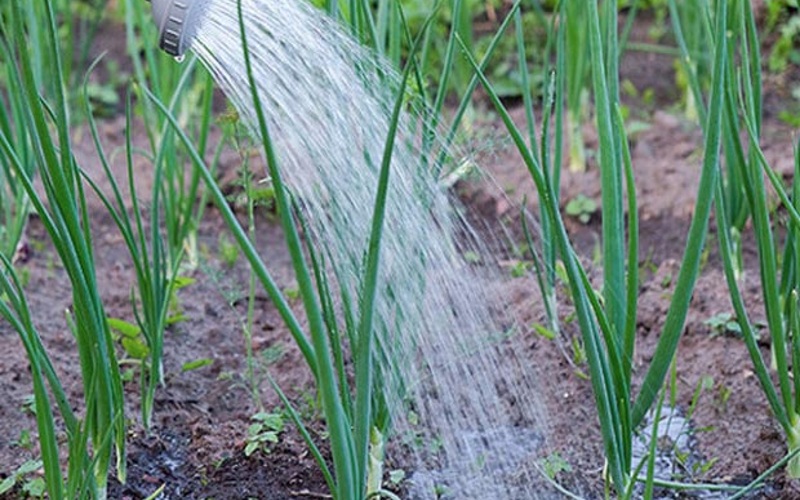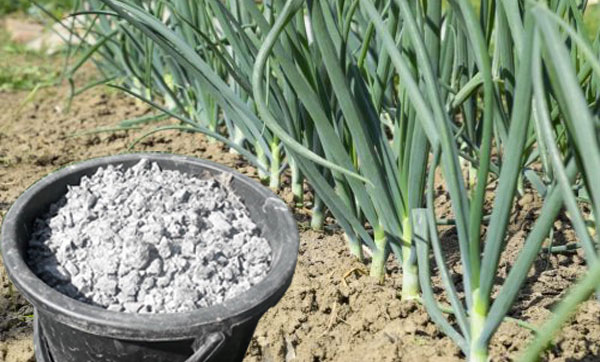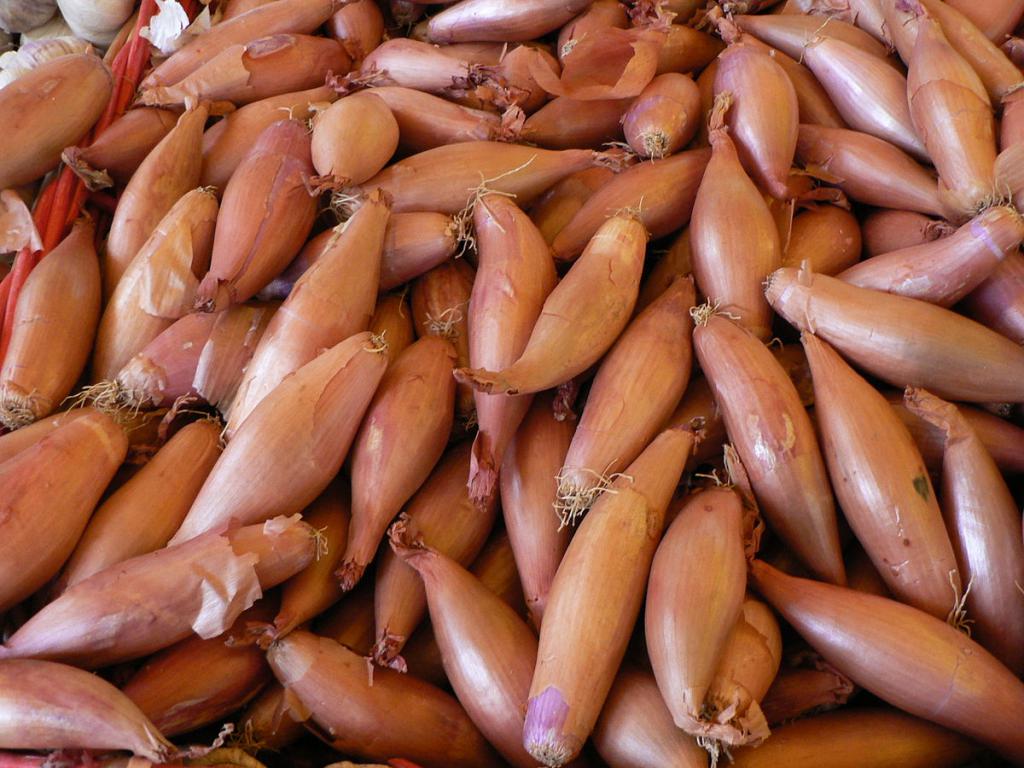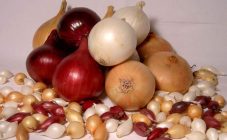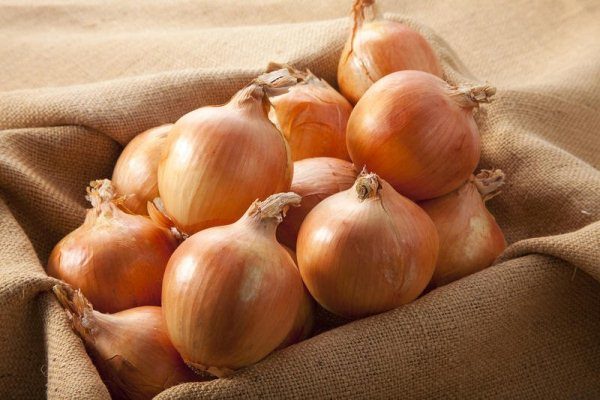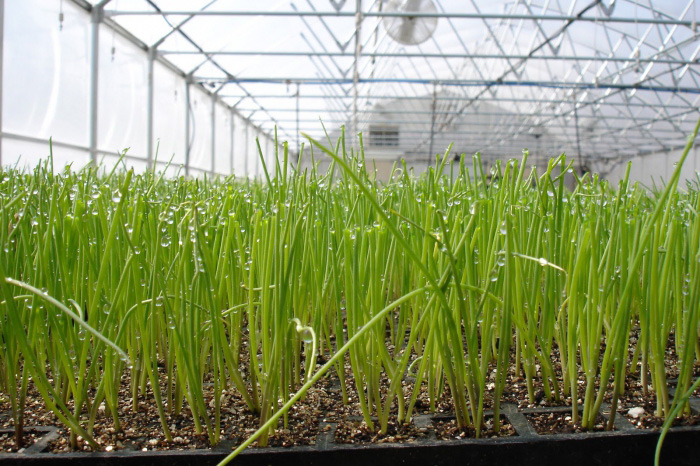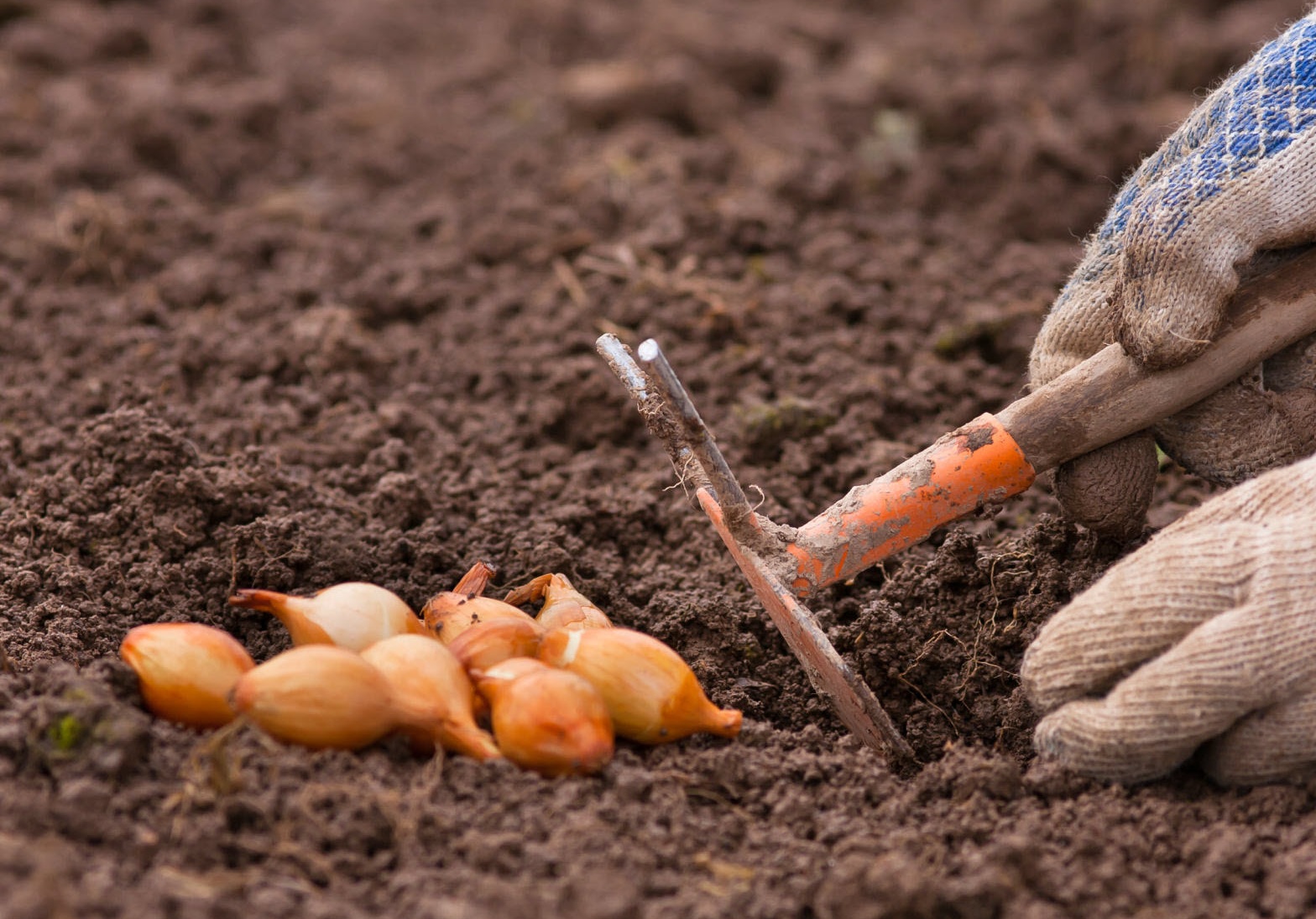Content:
There are many onion hybrids, most often they belong to the Dutch selection, including the Semko variety and its variety - Red Semko onion. In this family there is also a representative of domestic selection, which occupies a leading position in the Russian market. This is the Golden Semko bow.
The big advantage of this hybrid is that it is zoned and successfully grown in the Central, North-West, Ural, Siberian, Far-East regions, as well as everywhere in the south of the country. At the same time, regardless of the growing region, summer residents get a stable harvest without much effort. The only difference is that in the south of the country the harvest is obtained from the first year after sowing the seeds, and in other regions - in the second year after planting the onion sets.
Features of the variety
Onion Golden Semko belongs to the early maturing type. Full maturation occurs in 2.5 months. A distinctive feature of the variety is that it almost does not form nests and grows in single large bulbs. This means that Semko onions are not grown to produce green feathers.
The fruits are round. The color of the husk is golden, uniform. When cut, onions practically do not cause tears. The taste is spicy, but not too spicy, so the fruits can be used fresh for salads and heat treated.
Description of the main characteristics of the onion variety Golden Semko
| Index | Value |
|---|---|
| Yield | 3.5 - 5 kg / m 2 |
| Weight of 1 onion | 100 g |
| Keeping quality | 0.95 |
| Storage duration | Up to 7 months |
| Sugar content | 0.065 |
| Dry matter content | 0.13 |
| Maturation at the time of harvest | 95 % – 99 % |
High-quality Semko onions have a relatively high price, which is fully paid off by the resulting crop. Regardless of the quality of the planting material, the final result directly depends on the care.
Growing technique
Golden Semko can be grown in 2 ways:
Seminal. Onion grains harvested in the previous year are allowed for planting. Germination is assessed by germination on a damp cloth. To do this, 10 seeds are randomly selected and laid out on a cloth. The germination test is considered positive if 7 out of 10 seeds germinate. Quality seeds always have a deep black color;
Planting with bulbs.
High-quality onion sets Golden Semko has the following parameters:
- The diameter of the bulbs is 1-3 cm;
- The surface is dense, without stains, scratches, rot and other deformations;
- The husk is well dried, so it rustles in the hands;
- Hull color is uniform;
- Looks and smells healthy. Visually, there should be no rot, insects and rodent marks on it. The bulb should not smell of spoiled material (dampness, rot).
Onions do not tolerate touch, therefore, during winter storage, you should not often touch them with your hands. From this, the bulbs germinate and become unusable.
Landing conditions
Onion sets Red and Golden Semko grows well in warm and well-lit areas with moderate soil moisture. The culture is not afraid of short-term frosts, but a drop in temperature below -6 ˚C destroys the bulbs. The ideal temperature is +12 ˚C… + 16 ˚C, but even at +5 ˚C, the onion sprouts freely.
It is better to choose fertile soil for planting with a neutral or sub-alkaline environment. The garden bed should be in the zone of maximum illumination, since in the shade the bow becomes shallow, deformed and shoots arrows. Lowlands are best avoided as they have heavy and damp soils. The optimum groundwater level is 1 meter.
The best precursors for onions are cucumbers, potatoes, tomatoes, and cabbage. It is strictly forbidden to sow Semko after any varieties of onions and garlic.
Onions are very fond of well-fertilized organic soil. But it is forbidden to add fresh manure before planting onions. It causes the development of rot and infections, and also contributes to the filling of the garden with weeds. It is best if the bed was fertilized with organic matter last year under its predecessor.
Planting sevka
Before planting, the seedlings are soaked in water or in a solution of copper sulfate for 20 minutes. The bulbs are planted in 5 cm deep grooves with a row spacing of 20 cm. Sevoks are placed 10 cm apart so that the top is visible by about 5 mm. If the bulbs are deeply buried, then the crop will be of an irregular elongated shape. If placed close to the surface, the bulbs will grow ugly. After all the planting material has been placed in the furrows, a layer of soft and loose earth is poured on top. At the end of the work, the top layer is leveled with a rake.
Sowing seeds
Sowing is carried out in furrows, 2 cm deep. The distance between the rows is 5-10 cm. The seeds are laid out one by one, retreating 1.5-2 cm. Semko does not need to be sown densely, because of this it develops poorly. After placing all the grains in the furrows, they are sprinkled with earth, the top layer is slightly pressed and watered. To speed up germination and protect against weeds, the bed can be covered with foil or material. As soon as the first shoots appear, the shelter is removed. Normally, the sprouts germinate in 1.5-2 weeks. Growing onions from seeds is relevant for the southern regions, where the climate allows you to harvest their seeds in one year. In other cases, it is better to use the sevka planting.
Onion care
Watering
Golden Semko loves moist soil very much, especially in the first 2 months from the moment of planting. The water helps the bulb to fill. For watering, you will need warm, settled water. On average, the onion garden should be watered once a week. Watering frequency may vary depending on weather conditions. During rains, watering must be stopped, as excess moisture leads to rotting of the bulbs. In a dry summer, the amount of watering must be increased, otherwise the onion will be lifeless and dried up.
Weeding and loosening
Onions are extremely picky about the condition of the soil. In the phase of active growth, you need to weed and loosen the soil as often as possible. When weeds fill the garden, the onion loses its yield greatly. The same applies to the softness of the soil. In loose soil, bulbs develop much more actively, besides, air exchange improves.
Fertilization
For onions, 3 dressings are required. The first is done in the fall, at the time of preliminary preparation of the land for the upcoming summer cottage season. Fall feeding is usually the most generous. The second dressing is applied in the spring just before planting the onions. A solution of poultry manure or manure works well. Consumption rate - 3 liters of diluted infusion per 1 m2. Two weeks after sowing, the third feeding is carried out. It is needed in order to give strength and energy for the active growth of the bulbs. Urea (30 g) dissolved in 10 liters of water is suitable as a fertilizer.
Diseases and pests
The main pests of Semko onions are:
- Onion fly,
- Caterpillars,
- Thrips,
- Medvedki.
As a preventive measure, planting carrots and onions together is suitable. These plants are protectors for each other.Their scent repels insects. Also an effective preventive measure is the pre-sowing treatment of seeds and sowing with a 1% solution of copper sulfate. Sprouted bulbs can be sprayed with soapy water.
If the growing conditions are not observed and in especially unfavorable climatic zones, Semko onions can be exposed to diseases of a fungal nature:
- Powdery mildew,
- All kinds of rot
- Fusarium,
- Various spots.
The active development of the fungus occurs in acidic soils. Therefore, it is imperative to do liming with dolomite flour (400 g / m2). As a preventive measure, it is necessary to carefully select the planting material. Any suspicious bulbs should be removed. It is also worth paying close attention to soil moisture, since most fungi begin to multiply in waterlogged soil. As a control measure, you need to spray the beds with fungicides: Skor, Maxim, Previkur.
Cleaning
Harvesting begins when the ground portion falls to the ground and dries up. Around the second decade of July, the period of full ripening of Semko begins. Cleaning should be done in dry, sunny weather. The bulbs are pulled out of the ground and laid out in the garden so that they can dry out. Then the crop is transferred to a dry, dark place for drying. The bulbs should stay there for 15 days. Before storage, you need to cut off the tops, leaving a tail of 5-7 cm.
Advantages and disadvantages of the variety
| pros | Minuses |
|---|---|
| High yield | Not suitable for feather growing |
| Immunity against most diseases and pests | |
| High percentage of keeping quality | |
| Very little loss in long-term storage | |
| Can be grown in any soil, practically in all climates | |
| Yields in the first year of sowing | |
| Can be planted with bulbous and seed methods |
Onion Zolotisty Semko is a versatile domestic variety that is suitable for any growing conditions. He always gives a stable yield, the quality of which depends only on the care.
